
I rarely eat French fries. When I go out to eat somewhere that most people would typically order fries, say to get burgers, I’ll almost always forgo the fries, or if the burger comes with them, I won’t hesitate to donate them to someone more eager. It's not that I don’t like French fries; I do. I think they are probably the best example of how truly amazing and versatile the common potato can be.
The problem is that almost all the fries that I get—at restaurants or otherwise—are just plain bad. You see, you can’t just cut a potato into fry shape, and toss them in the fryer and expect them to come out well. Even the standard restaurant fry cooking protocol of soaking the fries in water after they’re cut, then doing a low blanch fry followed by a hot fry to crisp them up results in a french fry that is as ubiquitous as it is mediocre. And don’t even get me started on the phenomenon of “fresh cut” fries where they are cut to order and tossed straight in a hot fryer which in my opinion is the most successful grift in culinary history aside from bone broth.
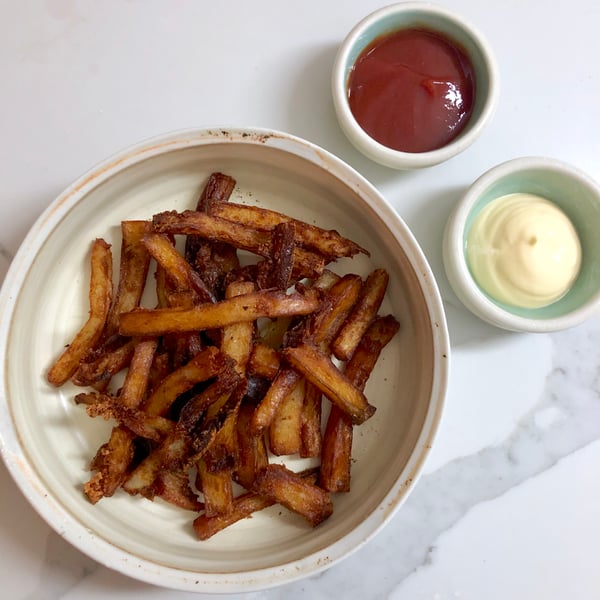
It’s okay to be thoughtful about how you cook your French fries. Fussing over fries is no more pretentious or snobbish than making sure the hydration on your pasta dough is just right, or that your sushi rice is perfectly cooked and seasoned, or taking your freshly delivered pizza out of the box, and tossing it straight onto a pre-heated sheet tray on the bottom of your oven to re-crisp the crust, or using a digital thermometer to test the doneness of your cakes to hit that sweet spot between unpleasantly gooey and disappointingly dry. Okay, I may be undercutting my point here, but nonetheless spending an extra bit of time on your fries will surely be rewarded, and nobody has to know. Enough with the pedantry, let’s turn you into the best fry cook in Bikini Bottom.
The first step is to cut your potatoes into French fry shapes. You can do this by hand, or if you’re really into French fries you can get yourself a French fry cutter. A quick word about potato selection: there are a little more than 4000 varieties of potatoes in the world, and only some of them are good for making fries. The property that makes a potato good for making fries or not is something called dry matter content, essentially the percentage of the potato that isn’t water. Unfortunately this is not an easy thing to measure at home, so the best we can do is find the best variety that on average has pretty close to the dry matter content that we’re looking for. In the U.S. your best bet is a russet, or Idaho. If you’re in the U.K. or Europe look for Maris Piper. Basically you are looking for a potato that falls under the category of ‘floury’ and not ‘waxy’.
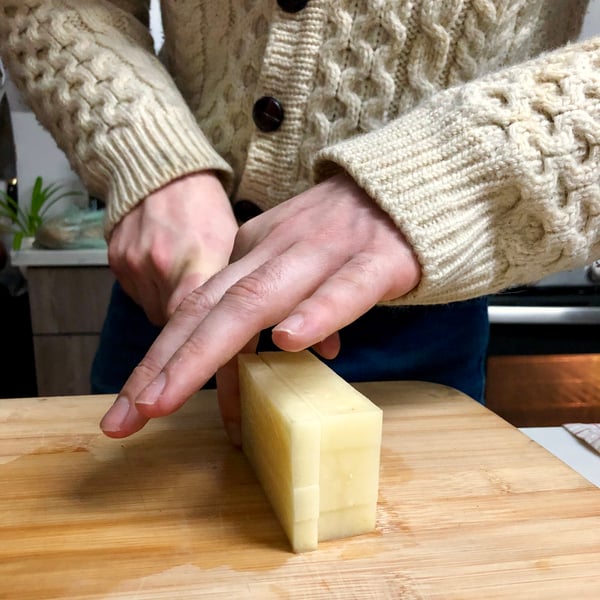
If you’re cutting your fries by hand, just cut them into half inch by half inch batons. If you’re an incorrigible perfectionist like me, you can square off all the edges, and make sure you don’t have any skin left, otherwise don’t worry about skin (it’s delicious).
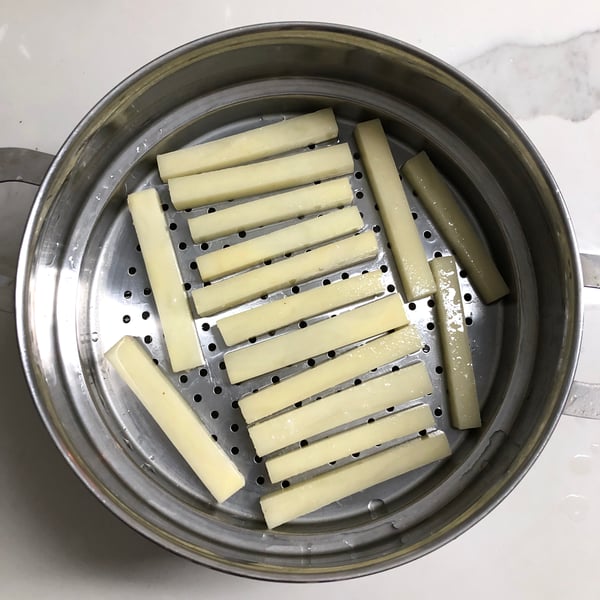
Next we want to salt the potatoes. Salting the potatoes before you cook them allows them to develop an outside surface that is especially well suited to getting really crispy when fried. After our potatoes are salted, we’re going to steam them for ten minutes. You can use whatever steaming rig you have at home. If you don’t have one, you can boil your fries in heavily salted water.
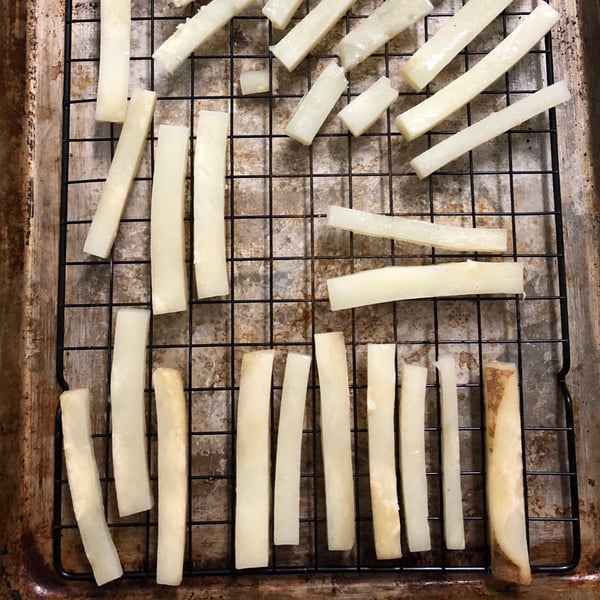
At this point, they will ideally be cooked to the point where they can just barely support their own weight, lay them out on a wire rack and let them cool. Room temperature is fine, but fridge temp is ideal because they are more structurally sound. You can even freeze them. A common misconception is that frozen fries are low quality, but actually many of the most delicious french fry techniques include a freeze step.
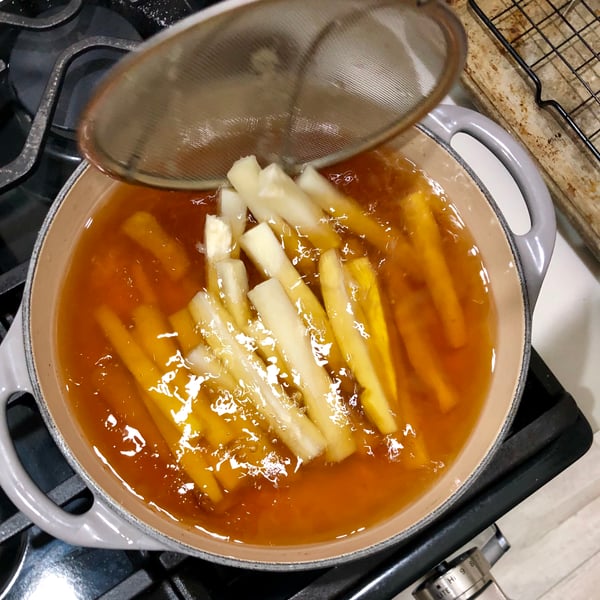
From here on out we are back in comfortable territory. Bring your fry oil up to 325 degrees, fry your cooled fries until they just start to become golden, then kick that fry oil up to 375, and fry until crispy and deep golden, adding salt as soon at they come out of the oil (but go light because you already seasoned them before the steam step).
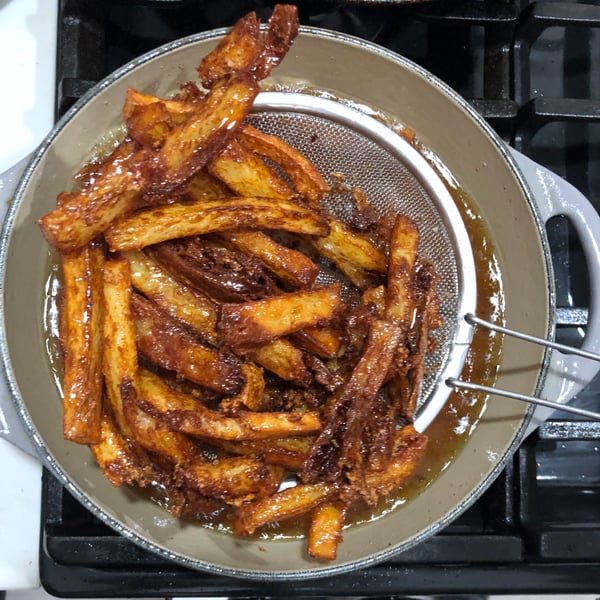
After reading this you’ve certainly become as fussy a fry critic as myself, so never settle for less than perfection again and make homemade fries your new signature recipe. For more experience with frying techniques check out our upcoming hands-on Street Food classes.
P.S. Unless you have some visceral aversion to it, eat your fries with mayo. It can be garlicky aioli, or spicy Sriracha mayo, or just the regular stuff, but if you’re only eating your French fries with ketchup you are living a life that is a mere shadow of the glory it could be.

